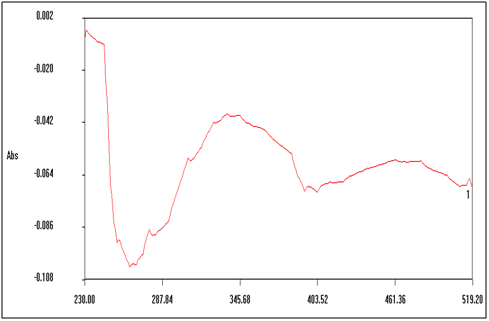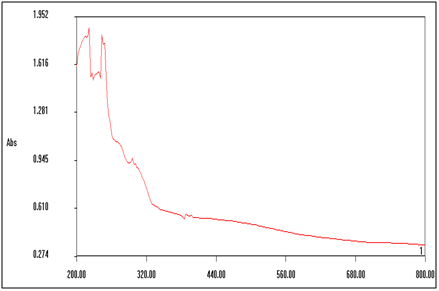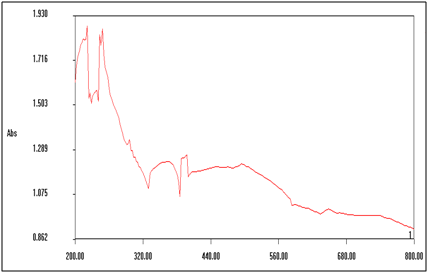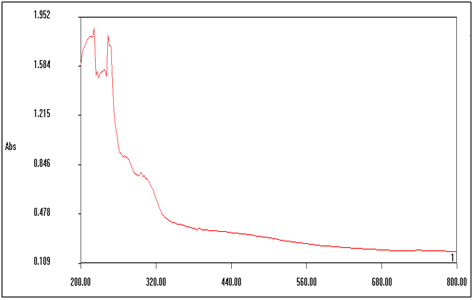Advances in
eISSN: 2572-8490


Short Communication Volume 5 Issue 2
Amity University, India
Correspondence: Kirti Rani, Amity Institute of Biotechnology, Amity University, Uttar Pradesh, India, Tel 1
Received: July 16, 2019 | Published: July 23, 2019
Citation: Rani K. Green synthesis of silver nitrate treated emulsified Elettaria cardamomum herbal suspensions and study their comparative antioxidant properties. Adv Tissue Eng Regen Med Open Access. 2019;5(3):98-101. DOI: 10.15406/atroa.2019.05.00106
Silver treated herbal extracts and pharmaceutical solutions have immense applications in the fields of medicine, therapeutics, energy and textile. But sometimes, their chemical synthesis can have many toxic and hazardous effects in treated patients as well as for the environment because of use of toxic and allergic organic and organic solvents and release of various by-products during their synthesis. So, in contrary, green synthesis minimize these kind of deleterious effects along with cost-effective and environment friendly approach to synthesise the safe materials. In our study, rapid, simple, eco-friendly and cost effective methodology was used for synthesis of silver nanoparticles using Elettaria cardamomum seeds. Further their emulsification of silver nitrate treated extracts was performed with natural emulsifiers like coconut, mustard and olive oil to enhance their respective antioxidant activity. UV-Vis spectroscopic analysis was used to confirm the presence of silver metal in our prepared Elettaria cardamomum herbal suspensions which showed very sharp peak in the range of 250-400nm.
Keywords: silver nitrate, Elettaria cardamomum, UV-Vis spectroscopy, antioxidant activity
Natural plant products have been used for curing human ailments as therapeutic medicine from very ancient era because these are enriched with excellent antimicrobial and antioxidant activity. Considering the vast vulnerability of plants, many researchers aimed to exploit these herbal sources to produce nano/micro/submicron materials by using safe green technique as a good alternative to conventional methods.1 Around 60% of the world’s population relies on herbal healthcare by safe administration of spices One of the most important of these spices being Elettaria cardamomum (Elaichi) is known as the ‘Queen of Spices’, is a perennial herb native to the Indian subcontinent. The plant grows in thick clumps of about 20 leafy shoots with the plant body reaching a height of up to 2-6m. In various In-vitro studies have shown that cardamom was helpful to prevent platelet aggregation and coagulation when used with epinephrine, ADP and collagen.2,3 Their seeds of this herb have capability to control diabetes and keeping digestive and metabolic syndromes strong. Chemical synthesis of metallic nanoparticles via the use of chemicals like hydrazine and sodium borohydride used as reducing and stabilising agents pose threats and dangers to living organisms and their surrounding environment.1,4-6 Previous studies have shown that Elettaria cardamomum have been used to reduce blood pressure by operating via calcium antagonist mechanisms along with presence of gut modulatory and diuretic activity along with its antioxidant activity.3,5,7,8 This green approach encouraged the many researchers to explore the potential of herbal plants and spices which can be used as reducing and capping agents to synthesise various metallic particles or herbal extracts by reducing the deleterious effects of most conventional way of their respective chemical synthesis for the flora and fauna. The factors which have motivated us to select Elettaria cardamomum seeds for our study are its ease of availability, easy, cost-effectiveness and high therapeutic potency. In our study, we have focused on cost-effective and green synthesis of silver containing herbal emulsified Elettaria cardamomum extracts for preparing various non-toxic and eco-friendly herbal suspensions which can be used for many therapeutic applications.
Preparation of Elettaria Cardamomum (elaichi) extract
10g fresh Elettaria Cardamomum (elaichi) seeds were washed and soaked overnight in double-distilled water. Next day, soaked seeds were crushed in 100ml double distilled water and mixture was boiled for 45mins at 65ºC and then centrifuged at 5000rpm for 15mins. The extract was decanted and stored at 4ºC until further use.9
Treatment of Elettaria Cardamomum (elaichi) suspensions with silver nitrate (AgNO3)
15ml of Elettaria Cardamomum (elaichi) extract was added to 60ml of aqueous solution of o.45g concentrations of silver nitrate (AgNO3) ranging. The mixture was boiled at 75ºC for 30min for reduction of Ag+ ions. Mixture is stored at 4ºC until further use.9
Emulsification of silver nitrate Elettaria Cardamomum (elaichi) suspensions
Aqueous solution of 0.45g silver nitrate was divided into 4 parts and 0.25ml of coconut, mustard and olive oil was added in to it for emulsification process. All four samples are centrifuged at 5000rpm for 20mins and the supernatant is decanted. Samples are sonicated for 15mins to obtain an herbal silver suspensions and stored at 4ºC.10
Characterization of prepared Elettaria cardamomum (elaichi) suspensions
UV-Vis Spectroscopic analysis
UV-Vis Spectroscopic analysis was carried out for silver containing Elettaria Cardamomum (elaichi) herbal suspensions by using Systronics Double Bean UV-Vis Spectrophotometer: 2202 with a bandwidth of 2.0nm by varying wavelengths from 230-520nm to observe absorption spectra for silver nitrate treated suspensions and by varying wavelengths from 200-800nm to observe absorption spectra for emulsified samples.11
Antioxidant assay
Total antioxidant activity of the herbal emulsified Elettaria Cardamomum (elaichi) suspensions was performed by the Ferric reducing antioxidant power (FRAP) assay. Fe3+ ions are reduced to Fe2+ ions in the presence of a strong reducing (antioxidant) agent. Antioxidant capacity of all the prepared silver nitrate treated and emulsified Elettaria Cardamomum (elaichi) herbal extracts (5%, 10%, 15% and 20% concentration) was determined by measuring optical density at 700nm.12
UV-Vis Spectroscopic analysis
UV-Vis Spectral analysis was carried out by using Systronics Double Bean UV-Vis Spectrophotometer: 2202 with a bandwidth of 2.0nm and we observed sharp absorption peak around 270nm confirming the presence of dissolved Ag+ ions for Elettaria Cardamomum (elaichi) suspensions (Figure 1) and observed result was found to comparable with previous findings.11,13–17

Figure 1 UV-Vis Absorption spectra of silver nitrate treated Elettaria Cardamomum (elaichi) suspension.
UV-Vis absorption spectroscopic analysis of silver nitrated emulsified Elettaria Cardamomum (elaichi) suspensions using herbal emulsifiers like coconut, mustard and olive oil respectively was performed by varying wavelength from 200-800nm (Figure 2–4). And, we observed maximum stability of absorption peaks of silver nitrated treated emulsified Elettaria Cardamomum (elaichi) suspensions using coconut, mustard and olive oil as nontoxic emulsifiers in the range of 320-440nm and observed observations were very much comparable to previous results.18–24

Figure 2 UV-Vis Absorption spectra of silver nitrate treated emulsified Elettaria Cardamomum (elaichi) suspensions by using coconut oil.

Figure 3 UV-Vis Absorption spectra of silver nitrate treated emulsified Elettaria Cardamomum (elaichi) suspensions by using mustard oil.

Figure 4 UV-Vis Absorption spectra of silver nitrate treated emulsified Elettaria Cardamomum (elaichi) suspensions by using olive oil.
Antioxidant activity
Antioxidant activity was studied using FRAP assay of silver nitrated treated and emulsified Elettaria Cardamomum (elaichi) suspension at different concentrations ranging from 5%, 10%, 15%, 20%. Reduction of Fe3+ ions was observed by measuring absorbance at 700nm to observe increasing antioxidant activity by increasing concentration of samples (Table 1). Silver nitrate treated Elettaria cardamomum suspension and olive oil driven emulsified herbal suspension has showed the highest antioxidant capacity as compared to silver nitrate untreated extract and other coconut oil & mustard oil driven Elettaria Cardamomum (elaichi) herbal extracts (Figure 5). These observations were quite similar to previous observations.25–28
Samples |
Concentration |
|||
5% |
10% |
15% |
20% |
|
Elaichi suspensions |
0.266 |
0.471 |
0.596 |
0.752 |
Silver nitrate titrated suspension |
0.271 |
0.288 |
0.306 |
0.308 |
Coconut oil driven Emulsified suspension |
0.21 |
0.221 |
0.468 |
0.533 |
Mustard oil driven Emulsified extract |
0.106 |
0.145 |
0.205 |
0.234 |
Olive oil driven emulsified suspension |
0.344 |
0.391 |
0.477 |
0.582 |
Table 1 Absorbance of prepared silver nitrate treated and emulsified Elettaria Cardamomum (elaichi) suspensions for studying their antioxidant activity at 700nm
In our study, we synthesised non-toxic silver nitrated treated Elettaria Cardamomum (elaichi) and coconut oil driven, mustard oil driven and olive oil driven Elettaria Cardamomum (elaichi) extracts by using easy, rapid and cost effective green and safe methodology to enhance the stability and antioxidant property by using natural emulsifiers like coconut oil, mustard oil and olive oil. Their UV-Vis spectroscopic analysis have confirmed the presence of silver metal in to prepared herbal extracts with sharp peaks shown in the range of 280 to 400nm. Their respective antioxidant activity was performed by using FRAP method and results were confirmed that the prepared herbal Elettaria Cardamomum (elaichi) extracts have good antioxidant results. Hence, these non-toxic, cost effective and fast green approach can be considered an effective methodology to prepare eco-friendly and cheap Elettaria Cardamomum (elaichi) herbal suspensions or extracts. The prepared herbal suspensions might be considered for further their respective use in various clinical and pharmaceutical industries for safe drug delivery systems to achieve targeted recognition of cancerous cells.29–31
None.

©2019 Rani, et al. This is an open access article distributed under the terms of the, which permits unrestricted use, distribution, and build upon your work non-commercially.